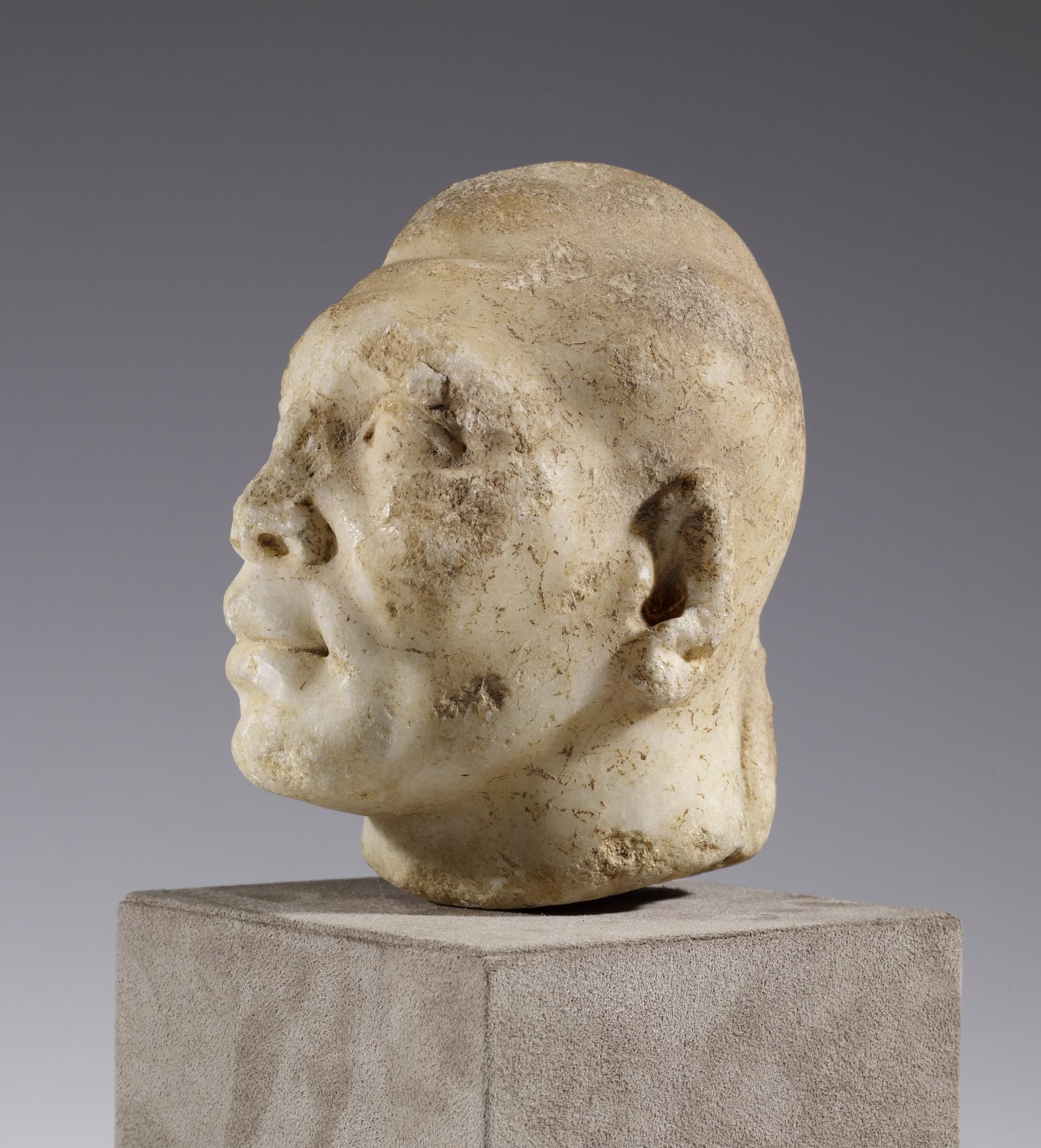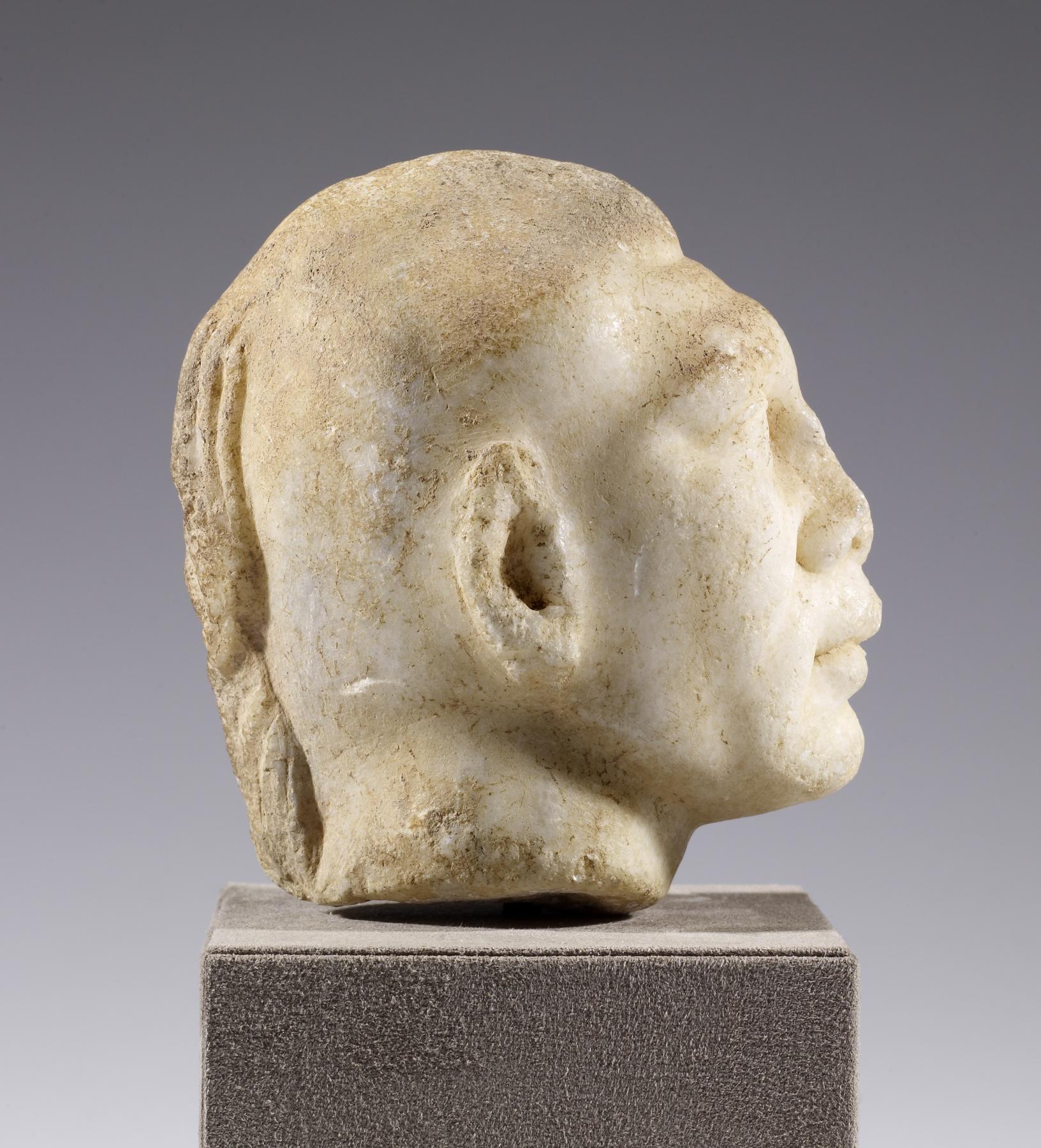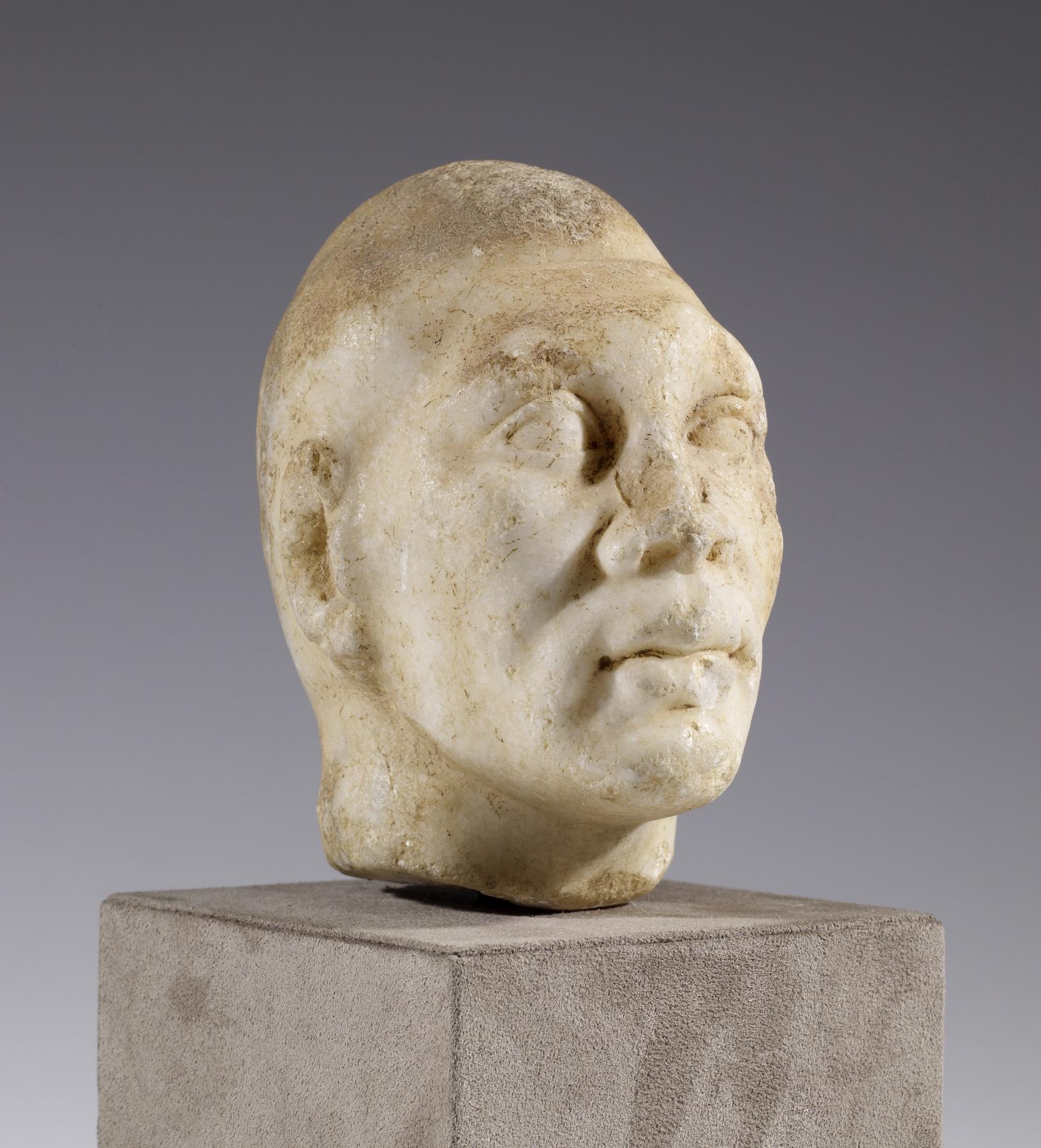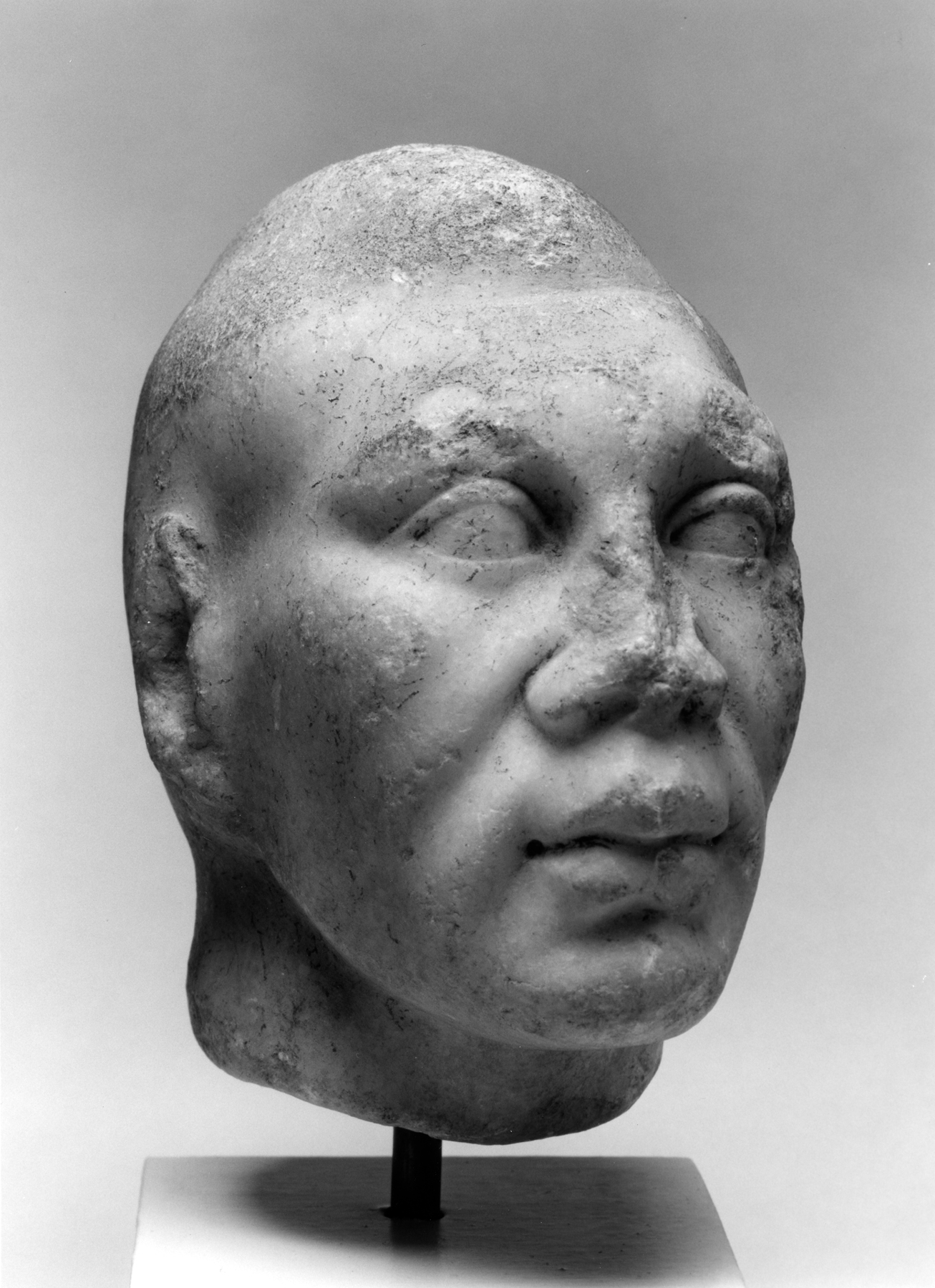Head of an Athlete
This small head is unusual for the shape of its skull, which transforms from a weathered and poorly defined mound on the top into defined locks of twisted hair down the back of the head and neck. The skull is hairless on either side of the asymmetrical crest. The forehead recedes back sharply and is marked by a deep furrow. The eyes have a semicircular shape and are heavily lidded, perhaps influenced by the portraiture of Ptolemaic Egypt. They are close-set, and there is damage to the area around the left eye and the right eyebrow. The nose has been broken off from bridge to tip. The full upper lip protrudes beyond the lower and the corners of the mouth are deeply drilled. The head’s physiognomy may be comparable to some private portraiture of Ptolemaic Egypt, and may be a Hellenistic or Roman interpretation of a foreigner. It may also be the portrait of an athlete, as both ears show the so-called cauliflower ear deformity, which is usually caused by repeated blunt trauma experienced by individuals who participate in such sports as boxing.
Provenance
Provenance (from the French provenir, 'to come from/forth') is the chronology of the ownership, custody, or location of a historical object. Learn more about provenance at the Walters.
Henry Walters, Baltimore [date and mode of acquisition unknown]; Walters Art Museum, 1931, by bequest.
Conservation
| Date | Description | Narrative |
|---|---|---|
| Technical Report | x-ray diffraction; other |
Geographies
Mediterranean region (Place of Origin)
Measurements
4 7/8 x 3 7/16 x 4 1/4 in. (12.5 x 8.7 x 10.8 cm)
Credit Line
Acquired by Henry Walters
Location in Museum
Accession Number
In libraries, galleries, museums, and archives, an accession number is a unique identifier assigned to each object in the collection.
In libraries, galleries, museums, and archives, an accession number is a unique identifier assigned to each object in the collection.
23.103














